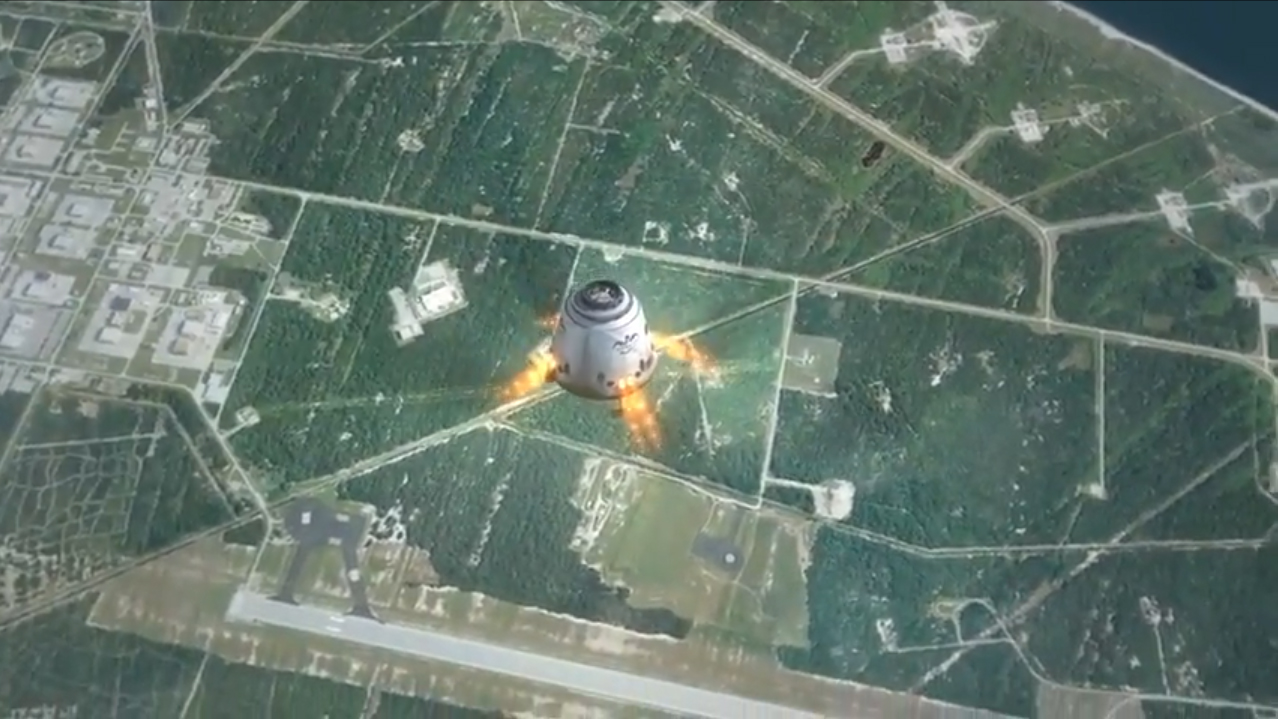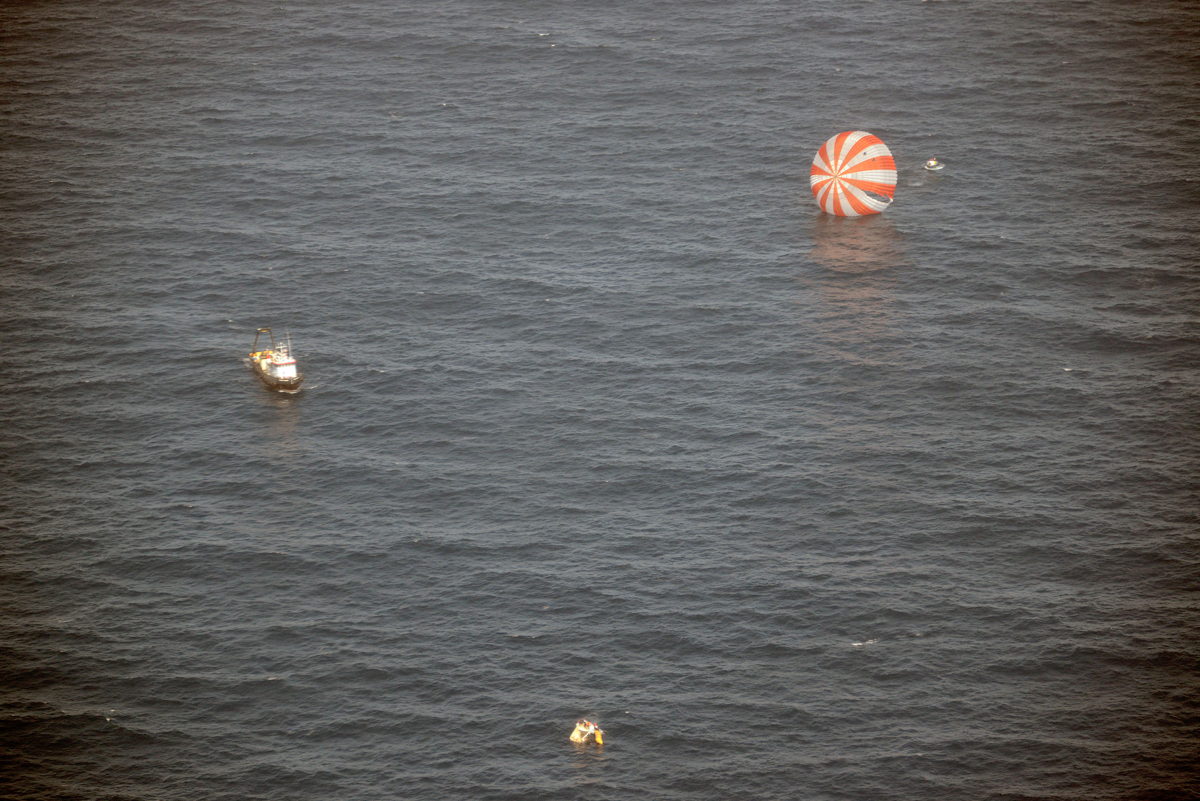SpaceX's Dragon Capsule 2.0 Looks Like 'Alien Spaceship,' Elon Musk Says

The next version of the Dragon spacecraft built by the private spaceflight company SpaceX will look like something truly out of this world, according to Elon Musk, the company's billionaire founder and CEO.
Musk detailed some of the high points of the firm's much-anticipated Dragon Version 2 to reporters today (March 28) during a briefing with NASA to celebrate the firm's second successful cargo mission to the International Space Station. SpaceX's unmanned Dragon capsule returned to Earth Tuesday (March 26) with a successful splashdown in the Pacific Ocean.
But according to Musk, Dragon Version 2 landings won't be so … wet. But it may look weird.
"There are side-mounted thruster pods and quite big windows for astronauts to see out," Musk told SPACE.com. "There are also legs to pop out at the bottom. It looks like a real alien spaceship." [The Rockets and Spaceships of SpaceX (Photo Gallery)]
Those pop out legs, Musk added, will be for land touchdowns.
Musk is designing the capsule in the hopes that it will make its landings back on Earth, not at sea. The current Dragon space capsule design can only land in water, but Musk said he wants to "push the envelope" with the spacecraft's next incarnation, be it for manned or unmanned flights.
Musk is expected to unveil the design sometime later this year.
Breaking space news, the latest updates on rocket launches, skywatching events and more!
Meanwhile, SpaceX is already experimenting with land landings using its Grasshopper rocket, a prototype for a completely reusable launch system that has made several test flights — each higher than the last — none of which were aimed at reaching space.
Dragon isn't the only member of the SpaceX fleet getting an upgrade. The company's Falcon 9 rocket is also going to be retooled for more efficiency with 60 or 70 percent greater capacity and 60 percent more powerful thrusters, Musk added.
Private cargo ship success
SpaceX's most recent Dragon mission ended after three weeks attached to the orbiting laboratory. The capsule splashed downin the Pacific Ocean about 214 miles (344 kilometers) off the coast of Baja California to return about 2,670 pounds (1,210 kg) science gear and back to Earth.
The Hawthorne, Calif.-based SpaceX has a $1.6 billion deal with NASA to fly a dozen cargo missions like the one that just ended. The company's fourth launch is scheduled for the end of September.
During its mission, Dragon returned time-sensitive science experiments that were successfully delivered to NASA on time once it arrived on dry land, according to SpaceX president Gwynne Shotwell. Among the experiments were plants grown on station and new alloy mixtures that could help improve metal strength on the ground, International Space Station program scientist Julie Robinson said.
NASA also has a commercial resupply contract with Orbital Sciences Corp., a $1.9 billion deal for at least eight unmanned cargo missions with the Virginia-based company's Antares rocket and Cygnus capsule.
Orbital Sciences Corp. is on schedule to launch a test flight of its rocket in mid-April.
Astronaut space taxis ahead
The retirement of NASA's space shuttle fleet in 2011 leaves the space agency dependent on Russia's Soyuz spacecraft to ferry astronaut crews to and from the space station. Once private space taxis become available, NASA hopes to use them to launch American astronauts on trips to the station.
SpaceX is one of four companies currently competing for the NASA crew launch contract. The manned version of SpaceX's capsule should carry seven astronauts into low-Earth orbit, and the company is scheduled to make another step towards the development of a crewed capsule later this year.
NASA and SpaceX are planning to stage a "pad abort test" to gauge the functionality of the company's "launch abort system" that would need to be in place before a crewed mission can take place, Musk said.
Follow Miriam Kramer @mirikramer and Google+. Follow us @Spacedotcom, Facebook and Google+. Original article on SPACE.com.

Miriam Kramer joined Space.com as a Staff Writer in December 2012. Since then, she has floated in weightlessness on a zero-gravity flight, felt the pull of 4-Gs in a trainer aircraft and watched rockets soar into space from Florida and Virginia. She also served as Space.com's lead space entertainment reporter, and enjoys all aspects of space news, astronomy and commercial spaceflight. Miriam has also presented space stories during live interviews with Fox News and other TV and radio outlets. She originally hails from Knoxville, Tennessee where she and her family would take trips to dark spots on the outskirts of town to watch meteor showers every year. She loves to travel and one day hopes to see the northern lights in person. Miriam is currently a space reporter with Axios, writing the Axios Space newsletter. You can follow Miriam on Twitter.

